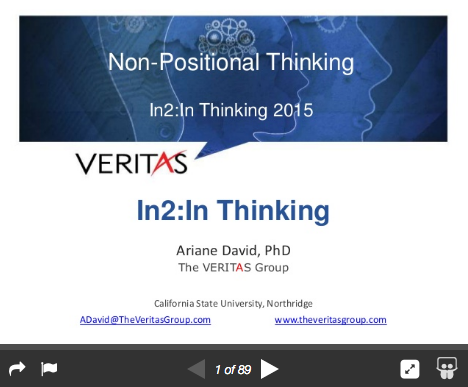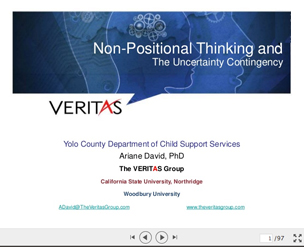What is This Thing Called Culture?
 Culture influences everything we do and think within the organization. It extends out to the farthest reaches of the organization surmounting geographic and social barriers, and it is amazingly resistant to change.
Culture influences everything we do and think within the organization. It extends out to the farthest reaches of the organization surmounting geographic and social barriers, and it is amazingly resistant to change.
Why is culture so pervasive and so strong? Well, it’s the job of culture to make sure that nothing in the organization gets so out of balance that it becomes unstable, unpredictable or threatens the survival of the organization. “Better safe than sorry,” is the motto of culture; its core unifying principle is values, and the enforcer is the norms.
Culture is the social container in which everything in an organization takes place. Ignore it at your own risk!
It’s also the job of culture to make sure that important survival and success-based knowledge survives and is passed on. A lot of this knowledge has to do with skills, but more importantly and subtly it deals with the transmission of the group’s values and norms, assumptions and beliefs. Thus, we can say that the purpose of culture is to maintain order and the status quo, and to contain and transmit the sum of organizational experience and knowledge to ensure continuity.
When we understand this we can see why change in organizations can be so difficult to bring about: change by its very nature IS discontinuous; even “continuous change” is discontinuous if only in small increments.
The Visible Life
Look at an organization. What do you see? You’ll likely see goods and services, employees and customers, sales materials, business strategies and plans. You could see a building, a web site and some other tangible artifacts.
But, try to gaze into the mire we call culture, and the first thing you’ll see is that you can’t see much. But keep looking, and some things will phase into view. You might notice a mission or vision statement written somewhere. You might observe that people tend to dress in a certain way or that the building has a particular layout or decor. You’ll probably notice there are stated rules, standards, and behavioral norms that people are expected to follow and a set of espoused values in place to guide…well, everything. If you listen hard you might hear some stories about the deeds and exploits of prominent people in the company that are designed to drive home those rules, standards, norms and values.
One thing you’ll probably notice is that there’s an awful lot of measuring going on: just about anything that can be measured is measured, and all these measured things are used to design strategies and make plans. This is the visible organization. We put our energy here because it’s what we can “see”!
The Secret Life
 Imagine an old fashioned wall clock. What do you see? A case, face, numbers and hands. The hands do the work of telling us the time. But the more complicated and vital part of the clock lies hidden behind the face. Likewise, in an organization, you can’t see the vital working parts. You won’t see unexpressed shared meaning, thoughts or feelings of employees, or their real shared assumptions. You won’t see the hidden values and rules that govern behavior.
Imagine an old fashioned wall clock. What do you see? A case, face, numbers and hands. The hands do the work of telling us the time. But the more complicated and vital part of the clock lies hidden behind the face. Likewise, in an organization, you can’t see the vital working parts. You won’t see unexpressed shared meaning, thoughts or feelings of employees, or their real shared assumptions. You won’t see the hidden values and rules that govern behavior.
The hidden aspects of an organization are important, because it is here that, for better or for worse, the full power of the people in the organizations is contained. .
Invisible: The Secret Life
» Unexpressed rules of the Game
» Actual norms, standards and values
» Shared unexpressed basic assumptions
» Latent organizational knowledge, unsanctioned stories and history
» Unexpressed shared meanings
» Unsanctioned channels and content of communication including gossip
» How the organization informally and punishes
» What really motivates and de-motivates
» Climate and practice of leadership; actual distribution of power and leadership norms
» How we think, solve problems, handle conflict, and make decisions
» Metaphors or symbols
» Creativity
Hidden individual and group dynamics
» Leadership
» Groupthink and the like
» Undiscussables
» Organizational learning
» Can only take place in the space of no-blame
» Requires critical and double-loop thinking
Hidden needs and motivation
» Fairness
» Trust
» Creativity
Personal responsibility.
If you have any questions regarding Organizational Culture and the Secret Life and it’s impact on your organization please feel free send me a note from our contact page or email me at ADavid[at]theveritasgroup.com.


